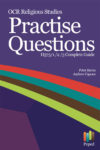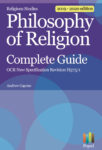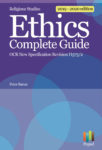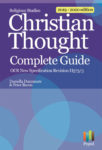STEP 4 Do a question analysis by theme
April 11, 2012
In this fourth step I analyse the nuances of a theme as revealed by the kind of questions the examiner asks. I take natural law as an example. If you go to any section of the ethics part of this site eg Kant you will find all past questions listed on that theme. You can then, at a glance, see the kind of nuances the examiner favours. I do this analysis for OCR AS paper, but the same technique can be used for A2 or for any exam board. For the previous three steps to exam success go to the blog section on the toolbar at the top.
Exam questions come to us as four questions on paper at OCR, and we have to answer two of them in an hour and a half. That isn’t a lot of choice, so we need to be prepared for different angles on our favourite topic (and make sure, despite last week’s advice, not to limit our choices too much in case our favourite topic is omitted this year).
But much more interesting is to analyse every question that has been asked, for example, on Natural Law, and then see how these questions are phrased. When we do this for example for the OCR board AS papers we find certain phrases come over and over again.
“What does natural law mean by natural?” Good question. Can we answer it?
What are the strengths of natural law? Do the strengths outweigh the weaknesses?
How does natural law apply to the issues surrounding euthanasia, abortion, war, or (at A2) business ethics, environmental ethics?
Notice that in part a questions on the OCR board at AS you are not expected to evaluate. But you could be asked “explain the strengths of natural law” (see below). And at A2 the key moral theories we learn at AS are still applicable.
So on a practical level, if we take our applied issues at A2, that is business ethics, environment and sexual ethics, or at As (abortion, euthanasia, genetic engineering, war and peace) we can construct a grid. We place the practical issues on one side and the major theories along the top and then we try to come some sort of conclusion. As you revise, try to work out what exactly are the issues surrounding the applied issue you are considering. For example, at AS the issues surrounding abortion might be four: personhood (the status of the foetus, is it a person?), the mother’s rights to her own body, the happiness of the child, and the sanctity of human life.
At A2, we might look at business ethics. Suppose we decide there are three key issues in business ethics – how businesses treat stakeholders, how they treat the environment and how they view virtues such as honesty and integrity, we can then ask what does Natural Law (or Kant, or Mill etc) have to say about each of these? To help you here I have put an “applyng Kant”, “applying Mill” section in the relevant part of the website.
Notice also that in part a. of AS you are never expected to evaluate. The evaluation only happens in part b. But this question appeared recently “Explain the strengths of natural law theory”. It sounds like an evaluation. However the word “explain” means just that, explain, not evaluate. You are not expected to say which strength is strongest, or whether there are any strengths at all. You are only expected to explain what those strengths are.
If you’re thinking “Help! I don’t know what the strengths of natural law actually are!”, then fear not. On every theory on the website you will find a table of strengths and weaknesses, and I have even quoted an academic philosopher in each box to give you a view to consider or bounce off in your essay. Just make sure that for every theory you know what the strengths and weaknesses might be.
Yes folks, we really are trying hard to help you get that A grade!!






0 Comments